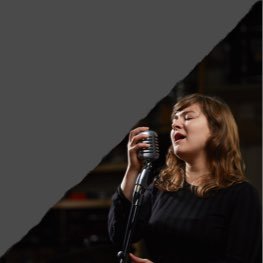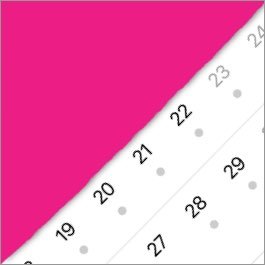IMPROVISING IN A FUSION STYLE
By JJ Wheeler – musician, teacher and record producer
Fusion is a very broad term used for types of music which fuse two or more styles together in a strong coalition to create a fusion of the genres. In the Trinity Rock & Pop syllabus and exams, there are specific fusions which may come up in the improvising session skills section. So, in this post we’re going to take a look at two popular fusions of styles: jazz funk and Latin soul.
Jazz funk is one of the many off-shoots of jazz, initially emerging in the 1970s through the work of pioneers such as Miles Davis and Herbie Hancock, and it is still popular today. This style often fuses the harmonic and improvisational characteristics of jazz with heavy grooves and repetitive forms of funk. It also led to jazz incorporating electric instruments into the ensemble sound, such as electric bass, the Fender Rhodes keyboard, Moog synthesisers and guitar effects. British groups adopted the style, with bands like Incognito, James Taylor Quartet and Jamiroquai emerging throughout the 1980s and 90s. The early 1990s in particular saw a surge in popularity for a version of jazz funk called ‘acid jazz’ (named after a record label which hosted a large proportion of jazz funk acts).
Latin soul is a fusion style created in the melting pot of New York in the 1960s. The genre reflects the eclectic mix of Latin influences in the city, with the typical jazz harmony and structure of the time. Mixing the rhythms of Cuban music with jazz and salsa, alongside elements of soul singing and simple forms, Latin soul hasn’t developed much over the decades. It has, however, remained a popular style and is often used in film music and sampled in contemporary music. An example of this is ‘Oye Como Va’. Despite being largely Latin-based music, most songs were sung in English, in an attempt to appeal to the English-speaking American population.
Improvising in a fusion style
In the Trinity Rock & Pop improvising session skills section (and, more importantly, the real world), you may come along instructions to play in a style which is a fusion of specific genres. For example, jazz funk or Latin soul. If this happens, it is important that:
- You understand the various characteristics of both styles (see previous blog posts on jazz, funk, latin and soul)
- You can quickly identify which aspects of the two styles are appropriate to the backing track provided, allowing you to implement these ideas successfully.
For example, if the style given says ‘Latin soul’, it is likely that the piece is performed with a ‘straight’ feel. Fusion styles including Latin often reference the ‘two’ side of a bossa nova groove, and may also feature part or all of claves and rhythms common to Latin styles, such as the partido alto. At the same time, fusions which refer to soul often reference soul styles of singing and soul timbres/instrumentation. Therefore it’s likely that if creating an accompaniment-type improvisation in the style, you will need to think about following the rhythmic patterns referenced in a Latin-type style, but with the laid-back, groove feeling of soul music.
The instruction ‘jazz funk’ often means that drummers should play in a more funk-orientated style, with backbeat and heavy kick-drum, as opposed to swing rhythms featuring the ride cymbal. However, on top of this, the harmony will usually feature ‘jazz’ type chords with extensions such as ‘maj7’ or ‘7’ (dominant 7th). It’s important when creating both accompaniment and lead-style solos (melodies) to understand the implications of these extensions and what the chord-scale relationship is, particularly for singers.
Whether creating a fusion of styles or a prescribed particular fusion, the key is to understand the characteristics of whichever styles are appropriate, how to identify their relevance to any accompanying music and then how to fuse these aspects successfully. Often it really is about following your ear and your instincts, but it can also open up a world of exciting new musical ideas.
Example improvising videos
Watch videos with session musicians and Rock & Pop examiner Tom Fleming and session musician Harry the Piano for tips and ideas on how to improvise in a reggae style:
Influential artists
In music performed by Incognito we can hear elements of jazz, funk and soul (and sometimes Latin styles such as samba and bossa nova). Much of the harmony in Incognito’s music uses extensions of basic chords, such as 7ths, 9ths and 13ths, much like the types of chords used in jazz music. At the same time, they use these types of chords in shorter sequences; more like the 4 or 8-bar forms that you might find in funk or soul music. Much of the instrumentation in Incognito’s music relates to jazz, through the use of horns (brass and woodwind instruments). These instruments are also usually supported by an ‘electric’ rhythm section of drums, electric guitar, electric bass and keyboards, similar to typical funk, pop or soul outfits. Most compositions are in a song format (such as intro – verse – chorus – verse – chorus – solos/bridge – chorus) which you’d find in funk, pop or soul music, but have the addition of improvised solos, as you would typically hear in jazz.
Miles Davis played a key role in several movements throughout jazz history, including bebop and cool jazz. Davis took his love of bands such as Sly and the Family Stone and incorporated elements of their ‘funk’ style into his own music. One of the first noticeable changes was the transition from an acoustic rhythm section to electric instruments. Dave Holland switched from playing double bass to electric, Herbie Hancock switched from piano to synthesizers and Chick Corea was brought into the band on keyboards and synths. Davis later employed electric guitarists such as John Scofield and John McLaughlin to give funk and rock sensibilities to the fusion of styles he was composing. Miles Davis started writing shorter forms, then one or two-chord vamps, upon which he would improvise using amplified trumpet and even effects. This was a huge departure from the long, winding harmonic sequences and forms of bebop jazz. Drummers in Davis’s band were ordered to play heavy backbeats and funky grooves in simple time, a stark contrast to the swinging, polyrhythmic ride-cymbal based patterns in earlier styles of jazz.
Fusion Spotify playlist
We've pulled together a playlist of fusion songs that appear on our Rock & Pop 2018 syllabus as well as other songs that fuse genres like jazz, funk, Latin and soul for further inspiration and ideas. Follow our Spotify profile and playlists to easily find the playlists whenever you want to have a listen.
About JJ Wheeler
JJ Wheeler is a professional touring and session drummer and percussionist, teacher and record label producer. He has worked with artists such as Celine Dion, worked on West End musicals including The Bodyguard and regularly performs in a range of bands across the UK and abroad. JJ runs workshops, clinics and masterclasses all over the world, and is also a Trinity Rock & Pop examiner







